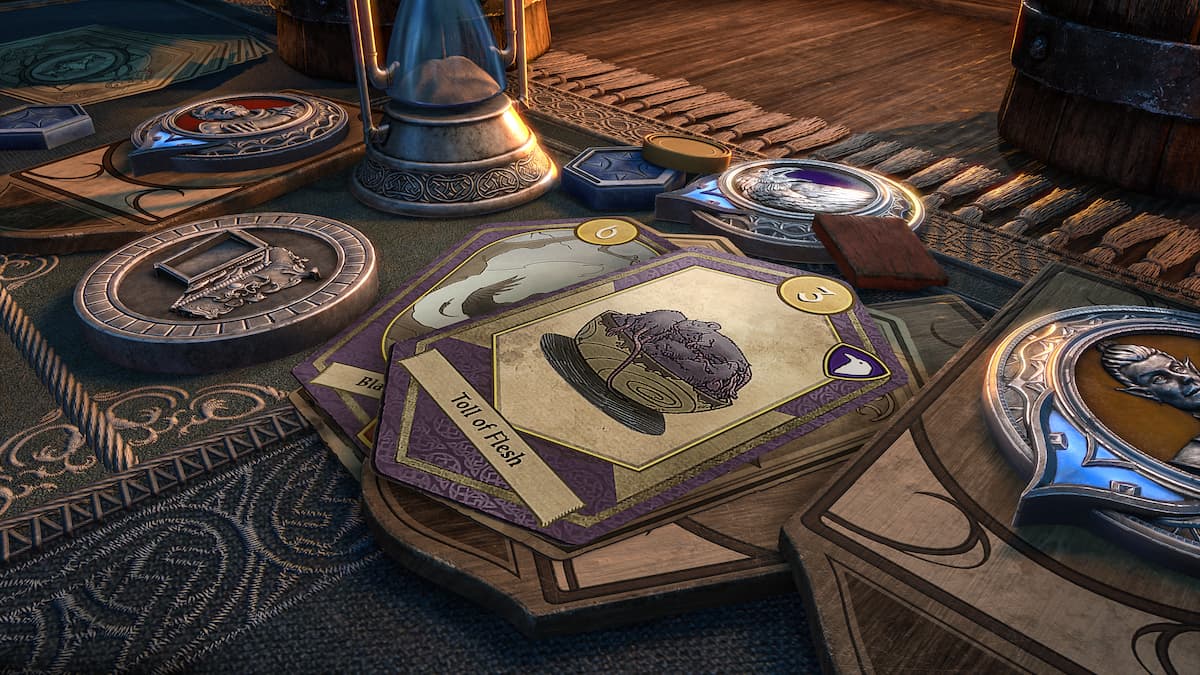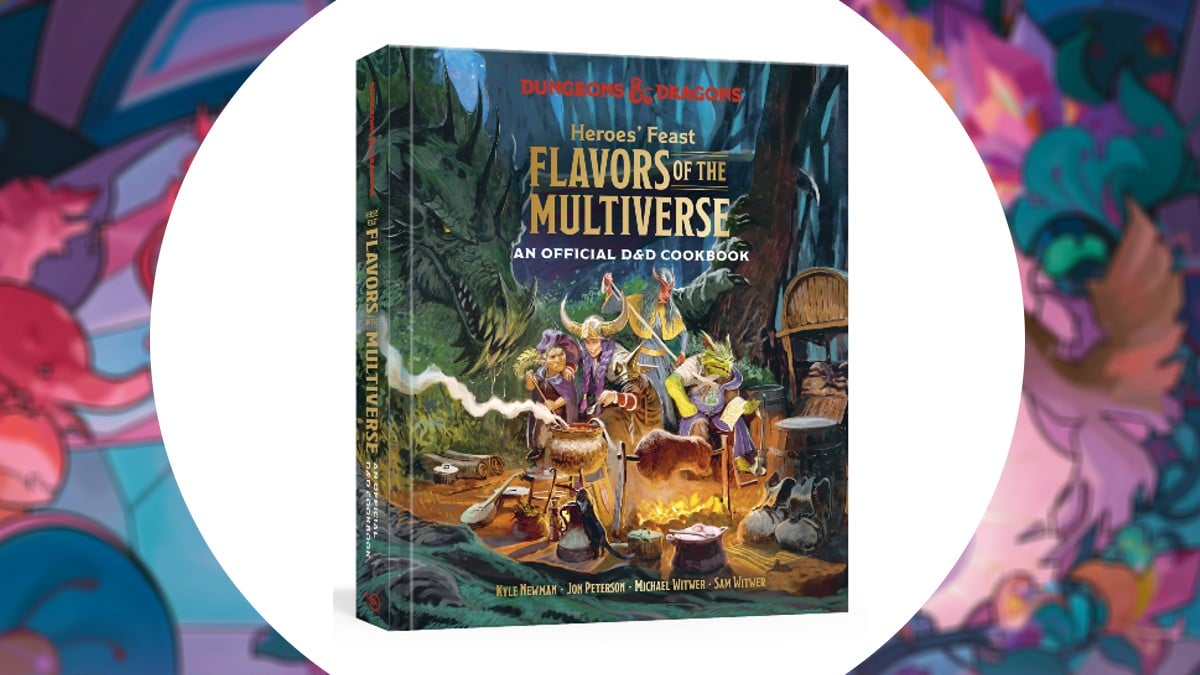Perhaps you, reader, are a fan of card games. You regularly log onto Yu-Gi-Oh! Master Duel and chain together combos that take up 20 minutes before your turn ends. Maybe you’re a Magic: The Gathering player who gets really, really mad at blue decks — I don’t blame you, either. Or perhaps you simply enjoy a more casual, but no less cutthroat, type of game, such as Settlers of Catan. Regardless of what flavor you prefer, Tales of Tribute, the new card game found in the Elder Scrolls Online chapter High Isle, may be up your alley.
Don’t get me wrong, I love Elder Scrolls Online, but Tales of Tribute is so good, it should be a standalone game. Tales of Tribute is a deckbuilding game designed around collecting resources and denying your opponent from doing the same. You do so in the goal of either collecting 40 Prestige, or having all four Patrons favor you — either of which will win you the game. This article will delve deep into some of the Patron decks and play styles you can expect to see in Tales of Tribute.
A quick note: this article is based off of an early preview build of High Isle, which will likely be different from the final release that players will have access to on High Isle launch. We were not able to capture footage or screenshots of this preview build, so any numbers listed in this article may be different from what you see on release.

The Basics
After completing the tutorial quests, you will be given four Patron decks with which to start playing. Each of the Patrons focus on a specific theme — Duke of Crows, for example, is designed around accumulating huge amounts of gold and converting them into Prestige, while Saint Pelin allows you to cycle Agents to generate resources and set up guards. We’ll go into these more down below, but be aware that there are also four additional decks which you can unlock via playing against NPCs.
There are a few types of resources to be aware of: Gold, Power, and Prestige. Gold is your primary resource, similar to Mana from other card games — any unspent Gold evaporates at the end of your turn. Power converts to Prestige at the end of your turn, and Prestige is what your ultimate goal is — 40 Prestige gives you the win at the end of the round.

Turn Order and Flow
At the beginning of the game, each player takes turns choosing two decks from their stock to play — Player 1 chooses a deck, then Player 2 chooses two decks, and finally Player 1 chooses the final deck. These decks are then shuffled together and combined to form the Tavern, from which five cards are drawn and placed in the middle of the table. The four deck Patrons are settled on the right side of the gameboard, along with a fifth “Patron” — the Treasury. This Patron is permanently neutral and allows you to sacrifice two Gold to change one of your cards into a Writ of Gold, which grants two Gold every time you play it.
Each player receives some Gold cards at the start of the game, allowing them to purchase up to some cards from the Tavern. For example, a player with 5 starting Gold can purchase a 5 Cost card, or purchase both a 4 Cost and a 1 Cost. When you purchase a card from the Tavern, it is immediately sent into your Cooldown Pile. Once you run out of cards in your Deck, your Cooldown Pile is shuffled and becomes the new Deck. This is how you build your deck — by purchasing cards centered around your strategy, or purchasing cards you don’t want your opponent to have. Deck bloat is a thing to be aware of, however, as you don’t want to draw into useless cards in future turns.
After purchasing cards from the Tavern, you can choose to interact with a Patron. Patrons start out neutral to both players — by paying a specific cost, you can have the Patron favor you. You can only interact with a Patron once per turn, so if you pay the Duke of Crow’s cost, you are locked out from any other Patron until your next turn. There are cards that give you multiple Patron interactions each turn, however. If you pay a Patron’s cost while they are favoring your opponent, they will become neutral, and paying them when neutral will have them favor you. Once you’ve completed your turn, you simply hit the hourglass to end, allowing your opponent to play.

Basic Strategies
Some cards have Combo effects — if you play them in succession with other cards of the same color, you can activate a combo. Duke of Crows, for example, heavily centers around drawing additional cards from your Deck and gaining Gold. It’s possible to combo Peck into Pool of Shadow, draw and play another Pool of Shadow, and continue the draw combo as long as you do not play any non-purple cards in between.
Yellow cards from the Hlaalu faction focus around taking cards up to a certain Gold cost from the Tavern for free — this is especially handy for preventing your opponent from purchasing what they need, but can also combo into building out a Duke of Crows Gold Ramp strategy. Red cards from the Pelin faction allow you to ensure that a recently used or purchased Agent can be played as soon as possible, by cycling it onto the top of your Draw Pile immediately. Blue cards from the Celarus faction allow you to both remove cards from the Tavern and scry a few cards off your Draw Pile, picking cards you do not need and sending them to the Cooldown Pile instead.
Games can generally take about 20 minutes to complete, longer if players are reading card effects. Once you complete a game, you will be sent a Rewards box in your mail based on if you won or lost. There will be tournaments and ranked leaderboards, as well as unique prizes for completing the “story mode”. Tales of Tribute is an excellent card game, and I really hope Zenimax leans into it and fleshes out support for the deckbuilder. It’s one of the few card games that kept me thinking about it long after I stopped playing. You can expect to enjoy this deep, strategic game when High Isle releases on June 6th, 2022.







Published: Apr 15, 2022 12:20 pm